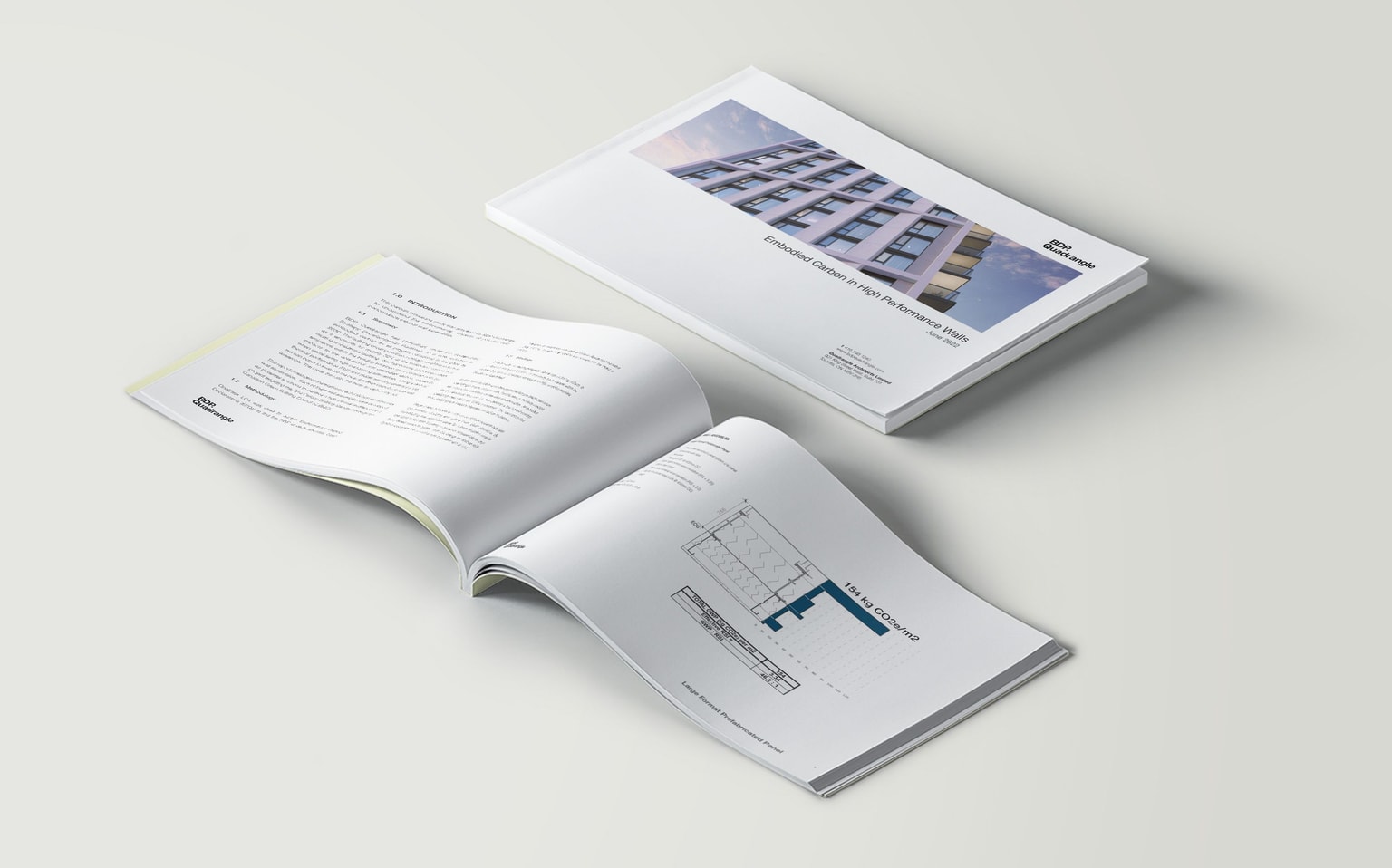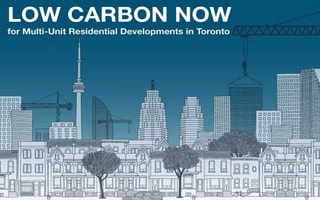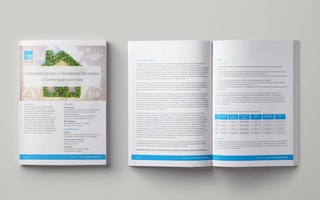Embodied carbon in high performance walls
BDP Quadrangle prepared a carbon emissions study to understand the environmental impacts of potential high performance exterior wall assemblies. Along side this document, under the Sustainability Strategy Decarbonization Roadmap, BDP Quadrangle has committed to modelling the embodied carbon of all of our projects by 2030.

The building envelope will be a critical part of this reduction as it accounts for roughly 30% of the embodied carbon in a multi-unit residential building. Any opportunity to reduce carbon emissions within the building envelope must consider both the impacts to the operational and embodied carbon, especially when considering high performing alternatives. Using a ratio of thermal performance (RSI) and global warming potential (GWP) we can begin to evaluate the overall carbon intensity of each wall assembly. The lower the ratio, the lower its carbon impact.
This report investigates the relative impact of six high-performance wall assemblies. Each of these wall assemblies were developed as potential solutions to achieve a high thermal resistance for a project targeting the Zero Carbon Building Standard through the Canadian Green Building Council (CaBGC).
Further Reading
Low Carbon Now
WorldGBC aims for net-zero operational and 40% less embodied carbon by 2030. How can we act now?
How design drives embodied carbon
We analyzed 44 of our multi-unit residential projects to highlight the critical role of early design decisions and strategies in reducing impact.
Better Balconies - Low Carbon Now
In collaboration with Multiple companies, our Better Balconies-Low Carbon Now study offers a holistic view of the technical aspects of balcony design.
Embodied Carbon in Residential Structures
This report is a collaboration between BDP Quadrangle and RJC Engineers addressing the issues to make educated decisions to impact meaningful change.



